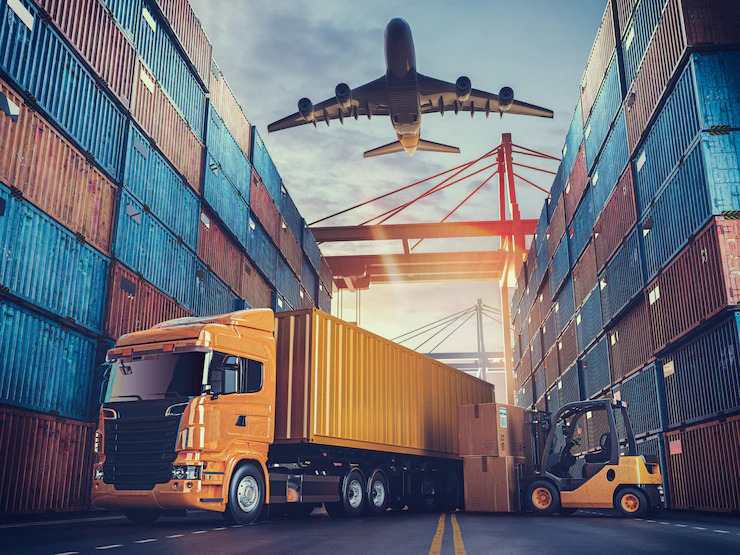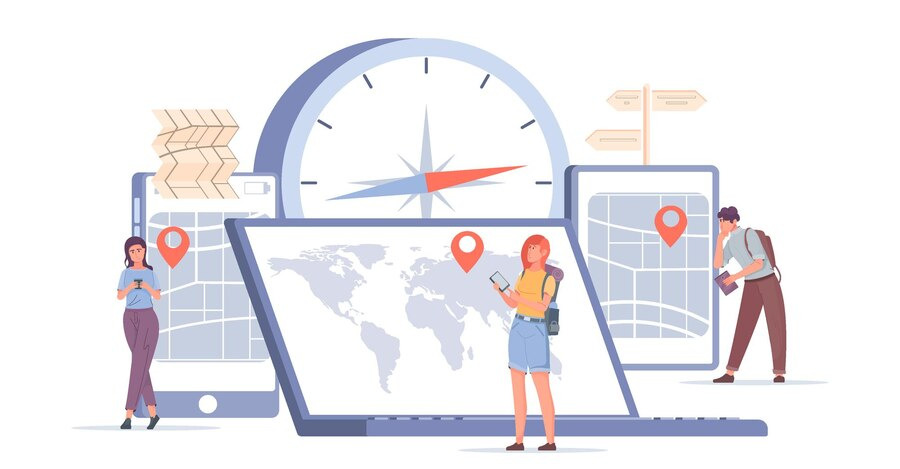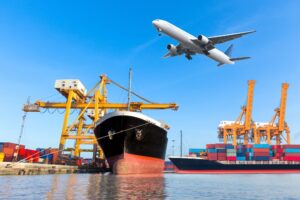China is one of the world’s largest exporters of goods, and Denmark is one of its major trading partners in Europe. If you are looking to import products from China to Denmark, you need to understand the benefits, options, and challenges of shipping from China to Denmark. In this article, we will explore the different shipping methods available, the factors to consider when choosing a shipping method, the logistics and customs requirements, the tips for efficient packaging and labeling, the ways to manage shipping costs and optimize import duties, the methods to track and monitor your shipments, and the solutions to deal with customs delays and resolve issues.
Understanding the benefits of shipping from China to Denmark

Shipping from China to Denmark can offer many benefits for both buyers and sellers. Some of the benefits are:
- Access to a large and diverse market: China is the world’s factory, producing a wide range of products, from electronics and machinery to clothing and furniture. You can find almost anything you need in China, and at competitive prices. Denmark, on the other hand, is a wealthy and developed country, with a high demand for quality and innovative products. By shipping from China to Denmark, you can tap into a large and diverse market, and increase your sales and profits.
- Availability of various shipping methods: There are many shipping methods to choose from when shipping from China to Denmark, depending on your budget, time, and preferences. You can ship by air, sea, rail, or road, or use a combination of these modes. Each shipping method has its own advantages and disadvantages, which we will discuss in the next section.
- Ease of communication and cooperation: China and Denmark have a good diplomatic and economic relationship, and they cooperate on various issues, such as trade, climate change, and innovation. There are also many cultural and educational exchanges between the two countries, which foster mutual understanding and respect. Moreover, both countries use English as a common language for business communication, which makes it easier to communicate and negotiate with your suppliers and customers.
- Support from trade agreements and organizations: China and Denmark are both members of the World Trade Organization (WTO), which regulates and facilitates international trade. They also have a bilateral trade agreement, which reduces tariffs and non-tariff barriers for certain products. Additionally, Denmark is part of the European Union (EU), which has a comprehensive trade and investment agreement with China, which covers areas such as market access, intellectual property rights, and sustainable development. These trade agreements and organizations can help you benefit from lower costs, faster procedures, and better protection when shipping from China to Denmark.
Exploring the different shipping methods available

When shipping from China to Denmark, you have four main shipping methods to choose from: air, sea, rail, and road. Each shipping method has its own pros and cons, and you need to weigh them carefully before making a decision. Here is a brief overview of each shipping method:
- Air: Air shipping is the fastest and most reliable way to ship from China to Denmark, but also the most expensive. It usually takes 3 to 7 days to ship by air, depending on the flight availability, destination, and customs clearance. Air shipping is suitable for urgent, high-value, or perishable goods, such as electronics, medical equipment, or fresh food. However, air shipping has some limitations, such as high costs, low capacity, strict regulations, and environmental impact. You also need to consider the airport fees, fuel surcharges, and security charges when shipping by air.
- Sea: Sea shipping is the most common and economical way to ship from China to Denmark, but also the slowest and most unpredictable. It usually takes 30 to 45 days to ship by sea, depending on the shipping route, weather, port congestion, and customs clearance. Sea shipping is suitable for large, heavy, or bulky goods, such as furniture, machinery, or raw materials. However, sea shipping has some drawbacks, such as long transit time, high risk of damage or loss, complex documentation, and environmental impact. You also need to consider the port fees, container fees, and demurrage charges when shipping by sea.
- Rail: Rail shipping is a relatively new and emerging way to ship from China to Denmark, which offers a balance between speed and cost. It usually takes 15 to 20 days to ship by rail, depending on the train schedule, destination, and customs clearance. Rail shipping is suitable for medium-sized, durable, or time-sensitive goods, such as clothing, toys, or auto parts. However, rail shipping has some challenges, such as limited coverage, variable quality, strict regulations, and environmental impact. You also need to consider the terminal fees, loading fees, and security fees when shipping by rail.
- Road: Road shipping is a supplementary way to ship from China to Denmark, which is mainly used for short-distance or cross-border transportation. It usually takes 5 to 10 days to ship by road, depending on the distance, traffic, and customs clearance. Road shipping is suitable for small, light, or flexible goods, such as samples, documents, or parcels. However, road shipping has some disadvantages, such as high costs, low capacity, strict regulations, and environmental impact. You also need to consider the toll fees, fuel surcharges, and insurance fees when shipping by road.
Factors to consider when choosing a shipping method.

Choosing a shipping method is not a simple task, as you need to consider many factors, such as:
- The nature of your goods: The type, size, weight, value, and shelf life of your goods can affect your choice of shipping method. For example, if your goods are fragile, expensive, or perishable, you may prefer air shipping for its speed and safety. If your goods are large, heavy, or bulky, you may opt for sea shipping for its low cost and high capacity. If your goods are medium-sized, durable, or time-sensitive, you may choose rail shipping for its balance between speed and cost. If your goods are small, light, or flexible, you may use road shipping for its convenience and flexibility.
- The destination of your goods: The distance, location, and accessibility of your destination can influence your choice of shipping method. For example, if your destination is far away, you may favor air shipping for its fast delivery. If your destination is near a port, you may select sea shipping for its easy access. If your destination is along the rail network, you may pick rail shipping for its direct connection. If your destination is in a remote area, you may use road shipping for its reachability.
- The budget of your goods: The cost of your goods can determine your choice of shipping method. For example, if your goods are high-value, you may afford air shipping for its reliability and security. If your goods are low-value, you may choose sea shipping for its affordability and efficiency. If your goods are medium-value, you may consider rail shipping for its competitiveness and quality. If your goods are variable-value, you may use road shipping for its adaptability and versatility.
- The time of your goods: The urgency, seasonality, and frequency of your goods can affect your choice of shipping method. For example, if your goods are urgent, you may need air shipping for its quick delivery. If your goods are seasonal, you may select sea shipping for its large capacity and low cost. If your goods are frequent, you may choose rail shipping for its regularity and stability. If your goods are occasional, you may use road shipping for its flexibility and availability.
Navigating the logistics and customs requirements

Shipping from China to Denmark involves many logistics and customs procedures, which you need to follow carefully to avoid delays, penalties, or rejections. Some of the logistics and customs requirements are:
- Finding a reliable shipping partner: Shipping from China to Denmark requires a lot of coordination and communication between different parties, such as suppliers, carriers, agents, brokers, and authorities. Therefore, you need to find a reliable shipping partner, who can handle all the aspects of your shipment, from sourcing, packing, loading, transporting, unloading, clearing, to delivering. You can choose from different types of shipping partners, such as freight forwarders, logistics companies, courier services, or online platforms. You should compare their services, prices, reputation, and experience before making a decision.
- Preparing the necessary documents: Shipping from China to Denmark requires a lot of documents, which you need to prepare in advance and submit to the relevant parties. Some of the documents are:
- Commercial invoice: A document that shows the details of your goods, such as description, quantity, price, value, origin, and destination. It is used for customs valuation, taxation, and verification.
- Packing list: A document that shows the details of your packing, such as number, weight, volume, and marks of your packages. It is used for customs inspection, identification, and verification.
- Bill of lading (B/L) or air waybill (AWB): A document that shows the details of your shipment, such as consignor, consignee, carrier, mode, route, and date of your transportation. It is used as a contract of carriage, a receipt of goods, and a proof of ownership.
- Certificate of origin (CO): A document that shows the origin of your goods, such as country, region, or factory of your production. It is used for customs preference, duty reduction, and verification.
- Other certificates: Depending on the type and nature of your goods, you may need other certificates, such as health certificate, phytosanitary certificate, quality certificate, inspection certificate, or conformity certificate. They are used for customs compliance, safety, and verification.
- Complying with the customs regulations: Shipping from China to Denmark requires you to comply with the customs regulations of both countries, which can vary depending on the type and value
- of your goods, such as:
- Tariffs: Tariffs are taxes imposed on imported goods, which are calculated based on the customs value, origin, and classification of your goods. The customs value is the price paid or payable for your goods, plus the cost of transportation, insurance, and other charges. The origin is the country or region where your goods are produced or manufactured. The classification is the code that identifies your goods according to the Harmonized System (HS), which is a standardized nomenclature for international trade. You can find the tariff rates for your goods on the EU TARIC database or the China Customs website.
- Non-tariff barriers: Non-tariff barriers are restrictions or regulations imposed on imported goods, which are not related to the price or quantity of your goods. They include quotas, licenses, standards, certifications, inspections, testing, labeling, packaging, and other requirements. You can find the non-tariff barriers for your goods on the EU Trade Helpdesk or the China Inspection and Quarantine website.
- Import duties: Import duties are taxes levied on imported goods, which are collected by the customs authorities of the importing country. They include customs duties, value-added tax (VAT), excise tax, and other fees. The customs duties are based on the tariff rates and the customs value of your goods. The VAT is based on the customs value plus the customs duties of your goods. The excise tax is based on the quantity or volume of your goods. The other fees are based on the services or procedures provided by the customs authorities. You can find the import duties for your goods on the EU Taxation and Customs Union website or the China Taxation Administration website.
- Paying the necessary fees: Shipping from China to Denmark requires you to pay the necessary fees, which are charged by the different parties involved in your shipment, such as:
- Shipping fees: Shipping fees are the costs of transporting your goods from China to Denmark, which are charged by the carriers or the shipping partners. They depend on the mode, distance, weight, volume, and speed of your shipment. You can compare the shipping fees from different carriers or shipping partners on online platforms, such as Freightos, Flexport, or Shipa Freight.
- Insurance fees: Insurance fees are the costs of protecting your goods from damage, loss, theft, or other risks during transit, which are charged by the insurance companies or the shipping partners. They depend on the value, type, and destination of your goods. You can purchase insurance for your goods from different insurance companies or shipping partners on online platforms, such as World Freight Rates, Parcel Monkey, or Easyship.
- Customs fees: Customs fees are the costs of clearing your goods through the customs authorities of both countries, which are charged by the customs brokers or the shipping partners. They depend on the type, value, and origin of your goods. You can hire customs brokers or shipping partners to handle the customs clearance for your goods on online platforms, such as BorderBuddy, Clearit, or ShipMonk.
Tips for efficient packaging and labeling

Shipping from China to Denmark requires you to pack and label your goods properly, to ensure their safety, security, and compliance during transit. Some of the tips for efficient packaging and labeling are:
- Choose the right packaging materials: You should choose the right packaging materials for your goods, depending on their type, size, weight, and fragility. You should use strong, durable, and waterproof materials, such as cardboard boxes, wooden crates, plastic containers, or metal drums. You should also use adequate cushioning materials, such as bubble wrap, foam, or paper, to protect your goods from shocks, vibrations, or impacts. You should also use appropriate sealing materials, such as tape, glue, or straps, to secure your packages from opening, tearing, or tampering.
- Follow the packaging standards: You should follow the packaging standards for your goods, depending on the mode, destination, and regulations of your shipment. You should comply with the International Safe Transit Association (ISTA) standards, which provide guidelines and tests for packaging performance and quality. You should also comply with the International Plant Protection Convention (IPPC) standards, which provide requirements and markings for wooden packaging materials. You should also comply with the International Air Transport Association (IATA) standards, which provide rules and instructions for packaging dangerous goods.
- Label your packages clearly: You should label your packages clearly and accurately, to facilitate their identification, tracking, and delivery. You should include the following information on your labels:
- Sender’s name, address, and contact details
- Receiver’s name, address, and contact details
- Shipping method and carrier’s name
- Package’s number, weight, and dimensions
- Package’s contents and value
- Package’s origin and destination
- Package’s HS code and CO
- Package’s special handling instructions, such as “Fragile”, “Do Not Stack”, or “This Side Up”
- Package’s barcode or QR code
Managing shipping costs and optimizing import duties

Shipping from China to Denmark can be expensive, especially if you do not plan and manage your shipping costs and import duties well. Some of the ways to manage shipping costs and optimize import duties are:
- Negotiate with your suppliers and customers: You should negotiate with your suppliers and customers to share or reduce the shipping costs and import duties. You should agree on the Incoterms, which are the terms of trade that define the responsibilities and risks of the seller and the buyer in an international transaction. You should choose the Incoterms that suit your needs and preferences, such as EXW (Ex Works), FOB (Free On Board), CIF (Cost, Insurance, and Freight), or DDP (Delivered Duty Paid).
- Consolidate your shipments: You should consolidate your shipments to save on the shipping costs and import duties. You should combine your small or partial shipments into one large or full shipment, to reduce the number of packages, containers, or trips. You should also use the same or nearby ports, airports, or terminals, to reduce the distance and time of your transportation. You should also use the same or compatible carriers, agents, or brokers, to reduce the fees and charges of your services.
- Optimize your packaging and labeling: You should optimize your packaging and labeling to save on the shipping costs and import duties. You should pack your goods compactly and efficiently, to reduce the weight and volume of your packages. You should also label your goods correctly and consistently, to avoid errors, delays, or penalties in your customs clearance. You should also use the HS code and CO that match your goods, to benefit from the lower tariffs or preferences in your trade agreements.
- Apply for duty relief or exemption: You should apply for duty relief or exemption to save on the import duties. You should check if your goods qualify for any duty relief or exemption schemes, such as:
- Temporary admission: A scheme that allows you to import your goods temporarily without paying import duties, if you intend to re-export them within a specified period and under certain conditions. It is suitable for goods that are used for exhibitions, fairs, demonstrations, repairs, or testing.
- Inward processing: A scheme that allows you to import your goods without paying import duties, if you intend to process them into finished products and re-export them within a specified period and under certain conditions. It is suitable for goods that are used for manufacturing, assembling, or refining.
- Outward processing: A scheme that allows you to export your goods without paying export duties, if you intend to process them abroad and re-import them within a specified period and under certain conditions. It is suitable for goods that are used for repairing, upgrading, or recycling.
- End-use relief: A scheme that allows you to import your goods at a reduced or zero rate of import duty, if you intend to use them for a specific purpose and under certain conditions. It is suitable for goods that are used for civil aviation, shipbuilding, agriculture, or research.
Tracking and monitoring your shipments

Shipping from China to Denmark can be risky, especially if you do not track and monitor your shipments well. Some of the ways to track and monitor your shipments are:
- Use the tracking tools: You should use the tracking tools provided by the carriers, agents, brokers, or shipping partners, to track and monitor your shipments. You should enter your tracking number, B/L number, AWB number, or barcode number, to get the real-time status and location of your shipments. You should also enable the notifications, alerts, or updates, to get the timely information and feedback of your shipments. You can use the tracking tools on online platforms, such as Track-Trace, 17Track, or AfterShip.
- Communicate with the parties: You should communicate with the parties involved in your shipments, to track and monitor your shipments. You should contact your suppliers, carriers, agents, brokers, or shipping partners, to confirm the details, progress, and issues of your shipments. You should also contact your customers, authorities, or intermediaries, to inform the status, arrival, and delivery of your shipments. You should also keep the records, receipts, and proofs of your shipments, to verify the accuracy, completeness, and validity of your shipments.
- Inspect and verify your goods: You should inspect and verify your goods before, during, and after your shipments, to track and monitor your shipments. You should check the quality, quantity, and condition of your goods before you ship them, to ensure they meet your specifications and expectations. You should also check the packaging, labeling, and documentation of your goods during your shipment, to ensure they comply with the regulations and standards of your shipment. You should also check the delivery, receipt, and inspection of your goods after your shipment, to ensure they arrive safely and correctly at your destination. You should also report any damage, loss, theft, or discrepancy of your goods, to claim compensation or resolution from the responsible parties.




